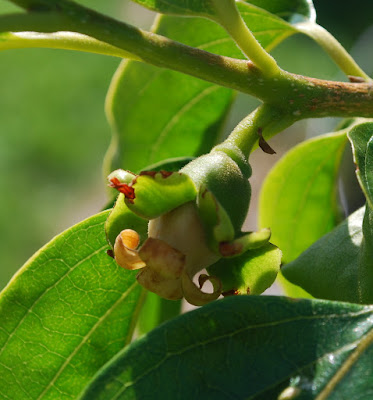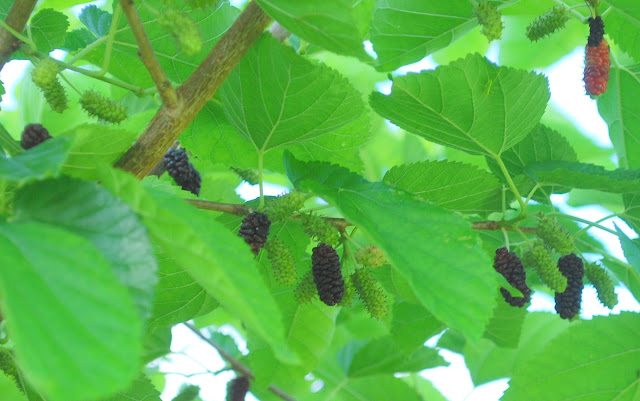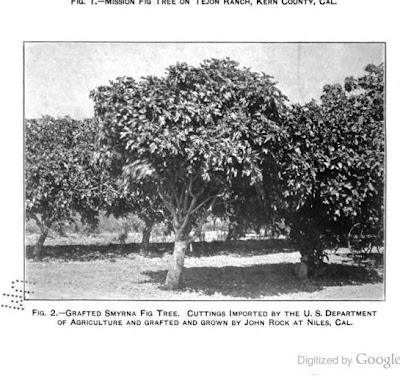 |
| Chocolate persimmon scion, grafted 4.14.16. 6.8.16 |
I was away for a week. This time of the year, a lot changes. Some of the last grafts are taking off. Not fully there yet, but growth is encouraging.
Chocolate persimmon on Saijo, Fuzzy male
kiwi on Blake kiwi, and
Petite negri fig on Dominic.
I have left the scions wrapped. The graft tape can be removed when they are more mature and more growth has occurred.
 |
| Nikita's Gift Persimmon Flowers. 6.8.16 |
It's been unusually hot. I missed the persimmon flowers (
Nikita's Gift and
Saijo) at their peak. Even though Saijo was much bigger than Nikita when planted, Nikita is much more vigorous. There were many more fowers this year. The primordial fruits seem to be swelling, so maybe they will take. These are in their 3rd year. I
planted them from dry root, mail order trees in 2013.'
This is the first year that I have put significant effort into the row of grape vines and kiwis. They were planted from early 2013 to this spring. This year I cleaned up the row, mulched with grass clippings, and fertilized (peecycle) to promote vigor. Most are at or above their deer cages. There is some risk for deer damageif those animals become more ambitious.
The mulberries (
Illinois Everbearing) are producing very well. They are incredibly sweet. For some reason, there isn't much, if any, bird theft.
I moved this tree from Vancouver to Battleground in October, 2012. I originally planted it March, 2010.
 |
| Saijo Persimmon Flower. 6.8.16 |
The
Fig graft,
Petite Negri on Domonic understock, is growing better. This was grafted late March, so about 2 1/2 months now. I tried before in 2009, but was less experienced with grafting then. Fig grafting is not new -
Eisen wrote about it in1901. He used cleft grafting, and recommended 2 year old scion for reduced pith, and terminal buds. So far, only one of my three scions, has taken. But that's all I need.
All of the brebas fell off
Smith Fig, but now there are main crop buds. This tree is an experiment, not know to do well in Patcific Northwest. Meanwhile, Lattarula figs are swelling bigger, showing promise. Same for
Carini.
 |
| Grapevines and kiwis. 6.8.16 |
The last of the
pawpaw fruits fell off. The trees look good. Maybe next year.
With more nurturing, mulch, water, fertilizer,
Blake Kiwi is growinbg more vigorously this year. The male fuzzy kiwi graft on that vine is also still looking good. There isn't a lot of info on growing kiwis in the Pacific NW, so I am on untested ground with this one. So far, deer have avoided this vine, while eating any grape leaf that sticks out of the cages.
 |
| Illinois Everbearing Mulberries. 6.8.16 |
 |
| Illinois Everbearing Mulberries. 6.8.16 |
 |
| Petite negri graft 6.8.16, Graftged whip / tongue, 3.21.16 |
 |
| Image of grafted fig tree. Eisen, 1901. |
 |
| Eisen's method for grafting figs. 1901. |


